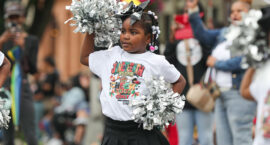
Weekend Reading for Women’s Representation is a compilation of stories about women’s representation in politics, sports and entertainment, judicial offices and the private sector—with a little gardening mixed in!
This week:
—This Friday marks the 249th anniversary of the signing of the Declaration of Independence. The journey for women’s equal representation remains unfinished.
—Zohran Mamdani looks poised to join 36-year-old Boston mayor Michelle Wu as part of a new generation of leadership in the U.S. Northeast. It’s time for more aging men like Cuomo to step aside and let more women step up. And if New York City is any indication, the voters may take matters into their own hands.
—St. Paul in 2023 elected an all-women city council in its ranked-choice voting elections. There’s now a vacant seat, and three women are among the four candidates running in an Aug. 12 special election.
—Jacinda Ardern’s new book, A Different Kind of Power, highlights the shifting dynamics of power, how women are redefining what leadership can be, and the impact of fairer election systems for creating openings for new voices like her own.
… and more!











